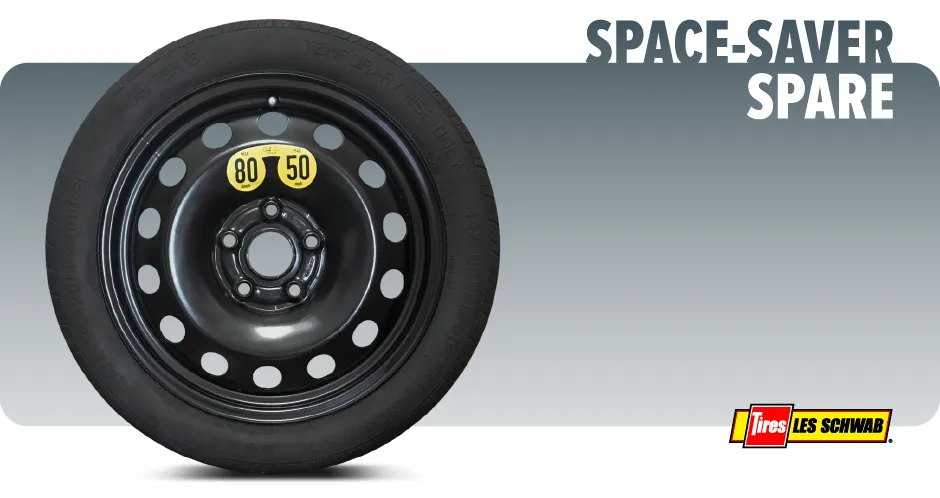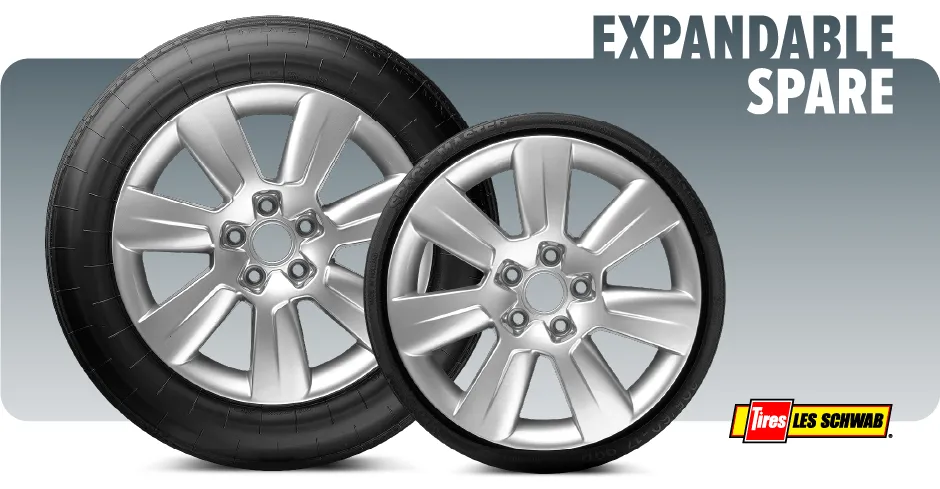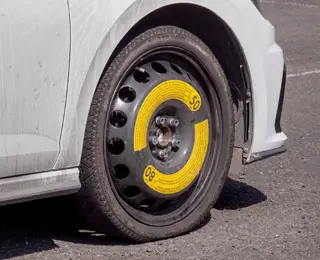How Long Will Your Spare Tire Last?
The tires on your car or truck are designed to tackle miles of pavement, gravel, dirt, and all sorts of weather conditions. But every so often, you’re going to run over an object that could cause a flat tire. When that happens and you install your spare (if your car has one), how long and how far can you drive on a spare tire until you get to Les Schwab? We have some answers to help you save money and stay safe on the road.
Can You Drive on a Flat Tire?
Unless your vehicle has run-flat tires, you should not go far on a flat. The farther you drive, the more damage you’ll do to the tire. Plus, it can be incredibly dangerous at higher speeds.
When you get a flat (unless you have run-flat tires):
- Stay in your lane, firmly hold the steering wheel, and steer a bit against any pulling you feel from the blown tire.
- Allow the car to slow down and move over to the side of the road as soon as possible.
- Once you’ve stopped, turn on your hazard lights.
- Change to the spare tire or use an inflator kit.
- Load the flat tire into your trunk or truck bed and get to Les Schwab as soon as possible. We offer free flat tire repairs when you have Les Schwab tires on your vehicle.
Why get to Les Schwab as soon as possible? Because your temporary spare tire may be smaller than your everyday tires. This makes it spin faster than the rest of the wheels. Plus, the tread can be vastly different, or the tire may not be designed for long distances. Regardless, those differences can cause alignment issues, decrease your control, reduce stopping power, cause hydroplaning on wet roads, and possibly damage your transmission and other parts of your vehicle. See your owner’s manual or the side of your spare tire for recommended safe driving speeds and distances.
How Long Can You Drive on a Spare Tire?
According to most vehicle manufacturers, a temporary spare tire (also known as a donut spare) should only be used for a short time. Really, only from the time you change to the spare until you can get it repaired.
When driving on a spare tire, we suggest you keep speeds at or below 50 miles per hour and drive no more than 50 miles before getting your flat fixed. Some full-size spare tires, or spare tires that are designed to match the other four tires on the vehicle, can be installed and used for longer distances, at normal speeds. Since these spares may not be used often, just make sure the air pressure is set to the manufacturer's specification and the tire doesn't have any visible issues before hitting the road.
Your Spare Is NOT a Long Term Solution
Most spare tires are smaller and have different tread than the other tires on your vehicle. Those differences can limit stopping power, safety, and overall control. Before driving too far on a spare, stop by your local Les Schwab. Our tire professionals can fix repairable Les Schwab tires for free and get you safely back on the road.
What Is a Space-Saver Spare?
Also known as a donut spare, the space-saver spare tire was designed to save space in smaller vehicles. If you drive a compact or smaller vehicle, you may have a space-saver spare. These tires have less traction than your regular tires, are smaller, should not be driven at speeds over 50 miles per hour, and should not be used for more than 50 miles.

What Is a Full-Size Spare?
Many vehicles, including sedans, SUVs and larger trucks have a full-size spare. As the name implies, they are the same size as the other tires on your vehicle. However, the tread on the spare may be different. If there is far more tread on the spare, you may notice decreased control and comfort while driving. And if the spare has minimized tread, you could experience hydroplaning on wet roads or reduced stopping power. Either way, it’s a good idea to get to Les Schwab when you have a flat. That way you can reduce your time driving on a spare.
What Are Expandable/Inflatable Spare Tires?
Expandable/inflatable spare tires are available in some vehicles, including Porsche, Audi, Volkswagen, Mercedes, and Ferrari models. These spares come with a non-inflated tire mounted to a rim and come with an air compressor. Once you inflate and install the spare, you’re ready to go.

What About Run-Flat Tires?
Run-flat tires are designed to withstand punctures and remain mostly inflated. However, if you do begin to lose tire pressure, these tires need to be inspected and repaired quickly to avoid a full replacement.
Les Schwab Knows Tires (and Spares)
Spare tires, as well as run-flat tires need attention, just like your regular tires. The next time you’re checking the air pressure on your four tires, check the spare, too. Not sure what to look for? Schedule a Les Schwab free pre-trip safety check. We’ll give everything a visual inspection and show you what to do the next time you get a flat.

